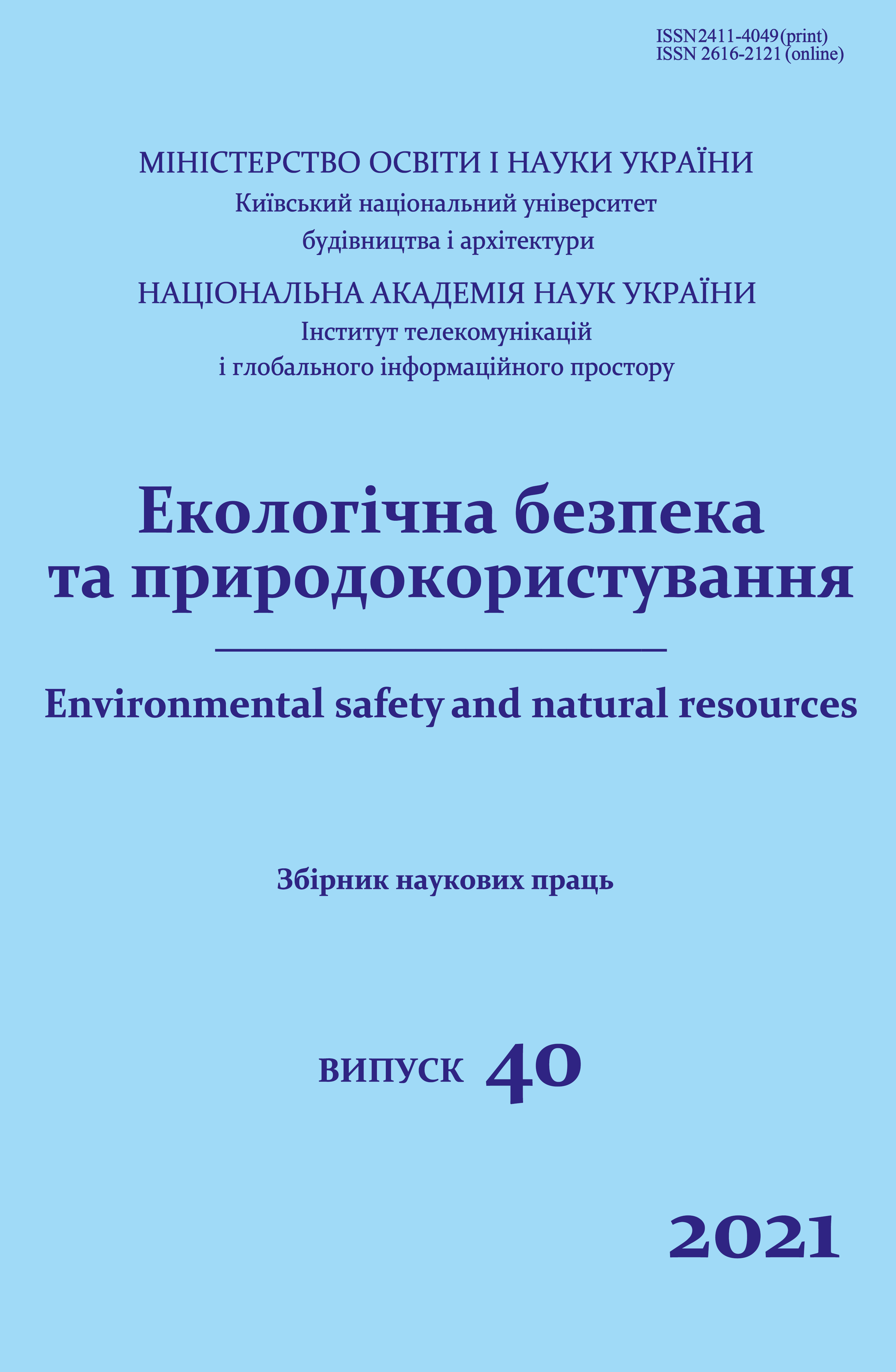Application of the reverse osmosis method for the purification of drinking water
DOI:
https://doi.org/10.32347/2411-4049.2021.4.32-45Keywords:
drinking water, environmental safety, drinking water quality, water purification methods, reverse osmosis, membrane, reverse osmosis disadvantagesAbstract
The article deals with the problem of clean water, as for Ukraine, which belongs to the states with a limited amount of water resources and a high level of their use. It has been substantiated that deviations from the standards of water quality, both surface and underground sources, reach 70-80%. Almost a third of the population of villages and towns of rural type in Ukraine consumes water from wells, the water in which is recognized as practically unfit for consumption, especially in terms of nitrate indicators, which have a negative impact on human health. Provided a comparative assessment of regulatory documents State sanitary norms and rules 2.2.4-171-10 "Hygienic requirements for drinking water intended for human consumption" and DSTU 7525: 2014 "Drinking water. Requirements and methods of quality control", in force on the territory of Ukraine, Council Directive 98/83/EC, which regulates water quality indicators at the international level. The modern views on the structure of drinking water as a dilute aqueous solution, where water is presented in the form of giant heterophase clusters, are considered and, based on this, the terms "prepared drinking water" and "natural drinking water" are defined. The problem of optimal adjustment of the qualitative and quantitative composition of drinking water is determined, which in the modern world is solved by methods of additional purification of water at the local level. It is shown that according to the principle of operation, household water purifiers can be divided into 4 main groups, namely: installations with a mechanical filter element; household filters of the sorption type; plants of an electrochemical type and plants of a membrane type based on the reverse osmosis process, which are widely represented on the world market today and are actively used at the local level (apartments, houses, kindergartens, schools), but they have a number of features and disadvantages. The mechanism of the processes in the system "initial water – membrane – prepared drinking water" with its outlined components is presented. The consequences of the use of reverse osmosis plants for the purification of drinking water are considered on the example of tap water, which has been purified in a plant with a membrane element TW30-1812-50 manufactured by DOW Chemical (USA) at an operating pressure of 18 atm. The presented results of changes in the quantitative and qualitative composition of water, namely, its fundamental components, as a result of post-treatment by reverse osmosis. Technological and economic disadvantages of reverse osmosis plants are substantiated. It has been confirmed that the reverse osmosis method is used to demineralize water and is capable of retaining almost all ions by 92–99%, and with a two-stage purification system up to 99.9%, that is, water is prepared by reverse osmosis purified from almost
all mineral salts, including useful and necessary for normal human life.
References
Snitinskiy, V. V., Antonyak, G. L., Bagday, T. V., Bubis, O. J., & Panas, N. J. (2014). Current state of ecological problems of water resources of Ukraine. Science and Technology Journal: Journal of Agrobiology and Ecology (Ukraine), 4 (1), 9-16. Retrieved June 06, 2021, from http://lnau.lviv.ua/lnau/files/visnuku/журнал%20агробіології%20та%20екології.pdf#page=11
Lototska, O. V., Kondratyuk, V. A., & Panichev, V. O. (2018). Hygienic problems of water supply in Ternopil region. Environment and health (Ukraine), 1(85), 36-40. Retrieved June 08, 2021, from https://cyberleninka.ru/article/n/gigienichni-problemi-vodopostachannya-u-ternopilskiy-oblasti/viewer.
The problem of drinking water in Ukraine. Retrieved June 18, 2021 from: https://aw-therm.com.ua/problema-pitnoyi-vodi-v-ukrayini/ (in Ukrainian).
Lototska, O. V., Kondratyuk, V. A., & Kucher, S. V. (2019). Quality of drinking water as one of the determinants of public health in the Western region of Ukraine. Bulletin of social hygiene and health care organizations of Ukraine (Ukraine), 1(79), 12-18 (in Ukrainian).
Hygienic requirements for drinking water intended for human consumption: DSanPiN 2.2.4-171-10 (2010). Kyiv: Ministry of Health of Ukraine (in Ukrainian).
On the quality of water intended for human consumption: Council Directive 98/83/EU of 3 November 1998. European Council.
Drinking water. Requirements and methods of quality control: DSTU 7525: 2014 (2014). Kyiv: Institute of Colloid Chemistry and Water Chemistry A.V. Dumansky NAS of Ukraine (in Ukrainian).
Yermolenko, V., Hafurova, O., Deineha M., Novak T., Temnikova A., & Naidansuren E. (2021). Quality of drinking water in rural areas: problems of legal environment. In Second International Conference on Sustainable Futures: Environmental, Technological, Social and Economic Matters (Ukraine), 280, 1-6. https://doi.org/10.1051/e3sconf/202128009022
Goncharuk, V. V., Smirnov, V. N., Syroeshkin, A. V., & Malyarenko, V. V. (2007). Clusters and giant heterophase water clusters. Chemistry and Technology of Water, 29(1), 3-17. Retrieved July 3, 2021, from http://dspace.nbuv.gov.ua/bitstream/handle/123456789/5492/01-Goncharuk.pdf?sequence=1.
Smirnov, A. N., Lapshin, V. B., Balyshev, A. V., Lebedev, I. M., Goncharuk, V. V., & Syroeshkin, A. V. (2005). Water structure: giant heterophase water clusters. Chemistry and technology of water (Ukraine), 2, 11-37.
Syroeshkin, A. V., Smirnov, A. N., Goncharuk, V. V., Uspenskaya, E. V., Nikolaev, G. M., Popov, N. I. et al. (2006). Water as a heterogeneous structure. Elektr. zh-l.: Researched in Russia, 843-854 (in Russian).
Kravchenko, M. (2016). Preparation of quality drinking water as a basis of the environmental safety and human health. Environmental problems: Scientific journal (Ukraine), 1(1), 57-60.
Gvozdyak, P. I. (2010). Methods of water preparation: imperatives of evolution and biochemistry of water. Visnyk of NASU (Ukraine), 2, 14-17.
Prokopov, V. O., & Lipovetskaya, O. B. (2013). Experience of using household filters in Ukraine for additional treatment of tap drinking water. Hygiene of populated areas (Ukraine), 62, 68-80.
Kurik, M. V. (2012). Criteria for the quality of drinking water. Physics of consciousness and life, cosmology and astrophysics of water, 3, 5-8.
Downloads
Published
How to Cite
Issue
Section
License
Copyright (c) 2021 Мarina V. Kravchenko, Olena S. Voloshkina, Lesya O. Vasylenko

This work is licensed under a Creative Commons Attribution 4.0 International License.
The journal «Environmental safety and natural resources» works under Creative Commons Attribution 4.0 International (CC BY 4.0).
The licensing policy is compatible with the overwhelming majority of open access and archiving policies.

